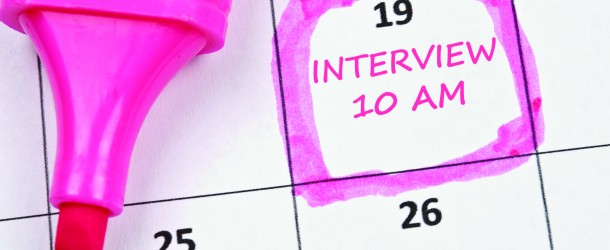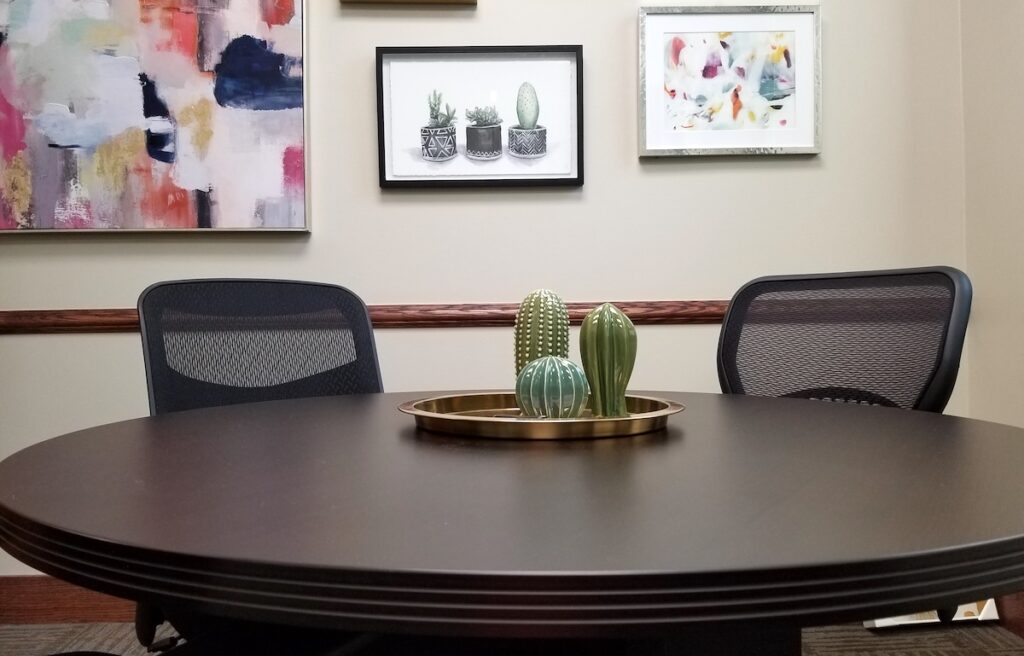The hiring process can be a daunting emotional rollercoaster. You optimistically apply for jobs and wonder if you’ll ever hear back. You might question how you should format your resume to stand out or if you should contact the school to introduce yourself. Ultimately, there are a lot of factors outside of your control. Successfully managing the process is about focusing on what is within your control, like doing your homework, proper preparation, and solid execution. Mastering these steps will help you confidently articulate who you are and what you’re about, improving your chances of getting an interview or job offer.

Follow some of these tips to score the job you’re after.
Do your research.
Before you even apply, try to learn as much about the position and the school as you can. Look for ways to understand the school and the local community better. Start by analyzing the school’s website and try to determine their overall values or goals. Then, dig deeper into the art program to see what courses are offered, what staffing looks like, what facilities are available, etc. Having a better understanding of the school can indicate how the art program is supported, the school environment and help you determine if you really want a job at this school.
Submit your materials.
No job can be earned in the application, but jobs can be lost. Be intentional about what you submit to a school. Now that you better understand the school and art program, you can incorporate this information into your application materials. Remember, your goal is to help the hiring committee envision you working at their school. So, tailoring your resume and referencing aspects of the school in your cover letter can help make that happen. Other tips include:
- Edit your materials carefully. Be thorough with punctuation and grammar. If that’s not your strength, take the extra step to find a critical friend who can review your materials.
- Check the details. No one person will read everything, but everything will be read by someone. Some hiring committee members will look at your resume, while others will jump right to your transcripts. Each application material needs to be strong and accurate. This includes keeping any links to portfolios or websites up to date.
- Apply early. Even if a job posting window communicates a later date, applying early can help you be considered earlier in the process.
Prepare for the interview.
Congratulations, you scored an interview! The worst feeling is walking out of the room feeling like you should have responded differently. Spend time each day reviewing interview questions and practicing your responses out loud, even if you’re only responding to yourself. And if you mess up, react as you would in the interview. Verbalizing your responses is more authentic to the interview, and you’ll better be able to recall your thoughts at the moment. This can also help prevent nerves from taking over, resulting in long and rambling responses.

Craft the best response.
Knowing what to say can be challenging because you might be trying to guess what they want to hear. Avoid that trap and just be yourself. If they use a word or phrase that might be defined differently in your school, like “differentiation” or “student-centered,” don’t hesitate to ask for clarification. For example, “When we talk about differentiation at my school, we are breaking down a lesson by ability level for different groups in the class. Is that the same here?” This way, you avoid the mistake of not answering the question.

Overall, the best response is one that shares your philosophical view supported by an example. Sharing your philosophy communicates what you believe, and a specific example illustrates how your philosophy is put into action. Interview committees will spend hours meeting with several candidates. After a long day, they aren’t going to remember the poetic response of buzz words. They will remember the examples you shared that excited them and what they want at their school.
Disrupt the routine.
Interviews are often cold and formulaic. The committee asks a question, and you answer it. While this format is perfectly acceptable, it’s not consistent with the teaching position. Hiring committees want to add a team member they get along with and can laugh with. To disrupt the question-and-answer routine, look for an opportunity to embed a question into your response to spark a dialogue.
When you’re responding about showcasing student work, for example, share your most creative approach and ask if they currently do anything similar or if that would be welcomed at their school. They will likely respond, and now you’ve flipped the dynamic from a static question-and-answer session to a conversation with a different feel.
Address the elephant in the room.
Be aware of how committee members can interpret your qualifications, experiences, or general profile related to the job. For example, if you currently live far away, someone might not think you’ll be able to do after-school activities. Or if you’re currently at the elementary level and interviewing at a high school, there may feel like a gap. Address this area directly by acknowledging how something could appear and share the circumstances or how you would work to overcome the area of perceived deficiency.
Learn more:
The Art Teacher’s Ultimate Guide to Getting Hired
Getting Hired as an Art Educator (Ep. 226)
What You Should Know About Video Interviews
Getting Hired as an Art Educator
Getting a new job can be stressful because there is usually a genuine reason you’re looking to move on. If you don’t get an interview or a position, don’t beat yourself up and assume you did something wrong or weren’t a strong candidate. It comes down to fit in many cases, and schools are looking for someone with a certain perspective and similar experiences to meet a specific need. What you can control, however, are your application materials and how you prepare and execute the interview. Nail those, and you set yourself up to be in a pretty good position to impress the hiring committee and get the job offer.
What type of portfolio should you prepare for an interview?
What other ways should you prepare for an interview?
Magazine articles and podcasts are opinions of professional education contributors and do not necessarily represent the position of the Art of Education University (AOEU) or its academic offerings. Contributors use terms in the way they are most often talked about in the scope of their educational experiences.




